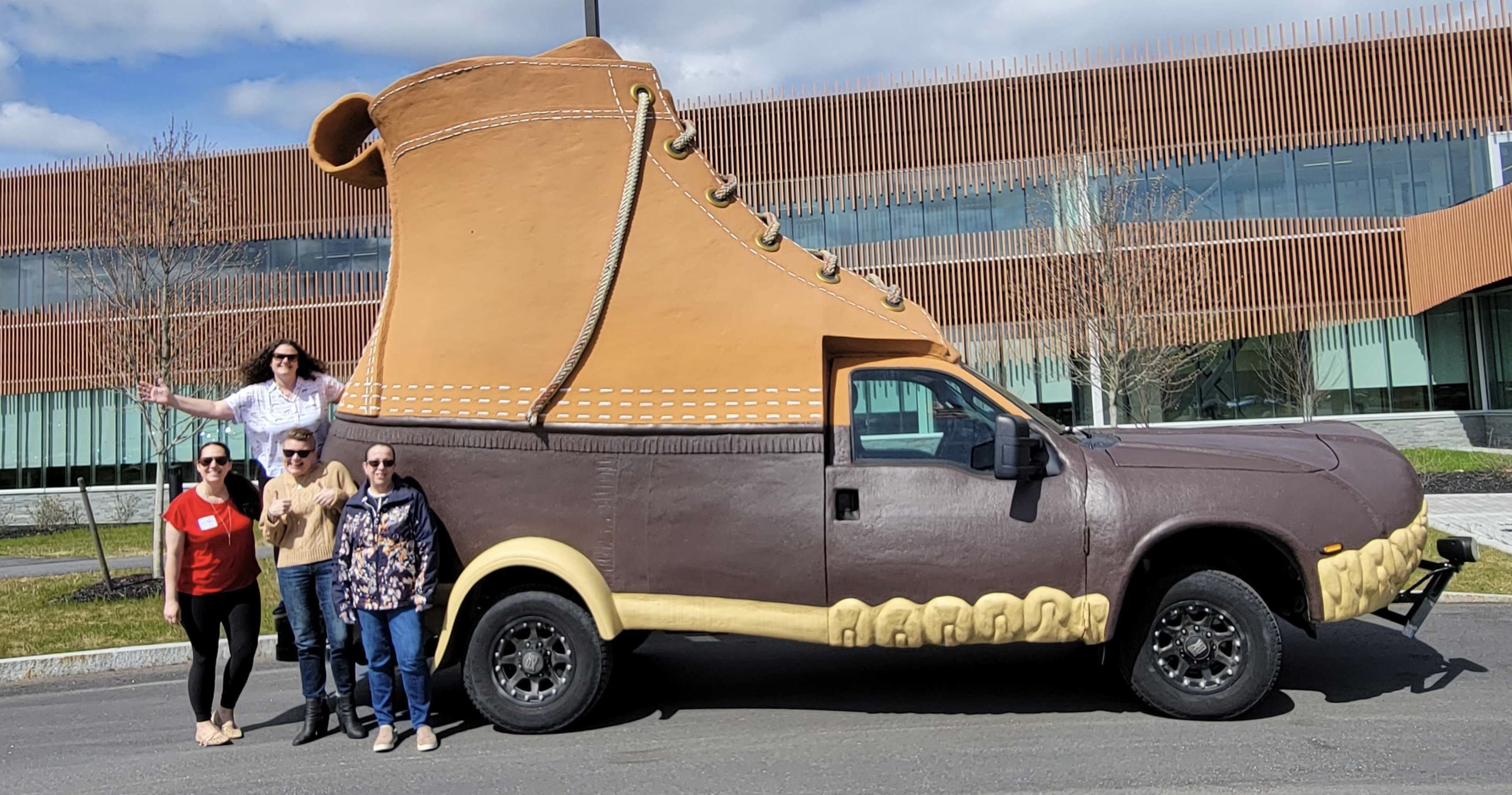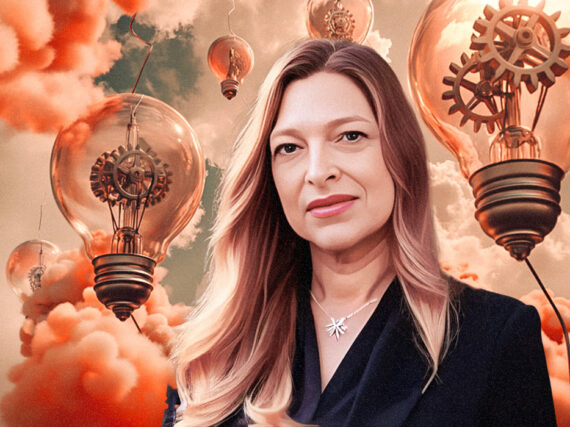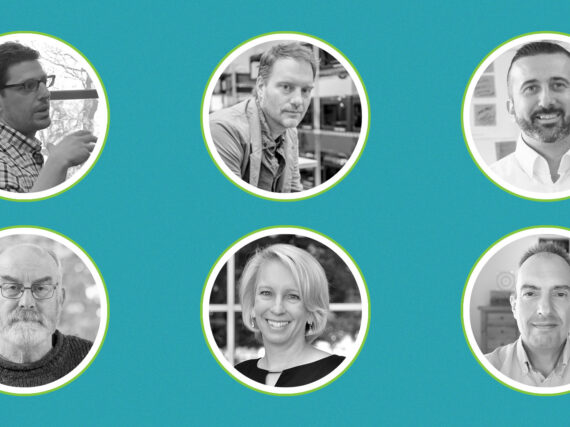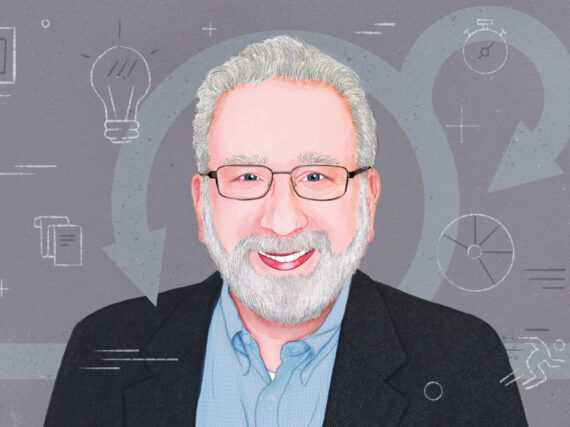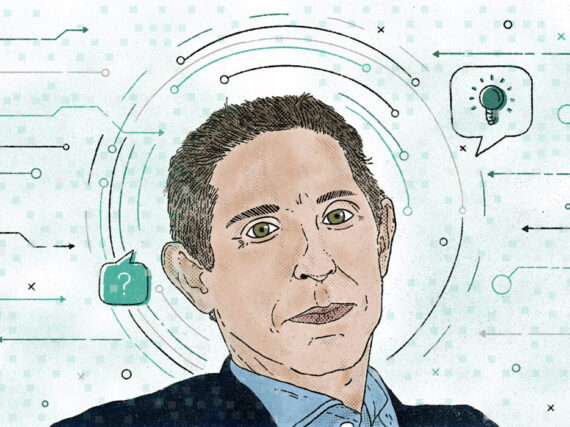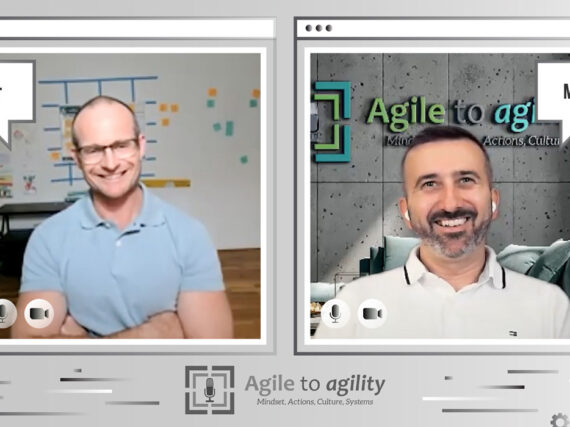By Tammy Schlesinger, Eleanor Glover, and Alison Schestopol
What is Agile? And why are we passionate about it? Agile is a project management mindset that encourages collaboration and continuous improvement. The 12 principles of the Agile Manifesto support teams in the delivery of working software using iterative increments that adapt and respond to changing requirements and market conditions. Frequent client and team feedback is the key to developing the right product that solves the right business problem at the right time.
The agile community is vast and worldwide. Many agile groups host virtual or on-site meetings on a weekly, monthly, or yearly basis. These gatherings bring together people who are currently working in an agile environment with people who want to learn more to discuss topics of interest in the agile community.
Here in Maine, we are fortunate to have Agile Maine, a group that meets each month and holds a yearly day-long conference called Agile Maine Day.
Agile Maine Day
In the spirit of the event, we wanted to share our 2024 Agile Maine Day takeaways in this blog.
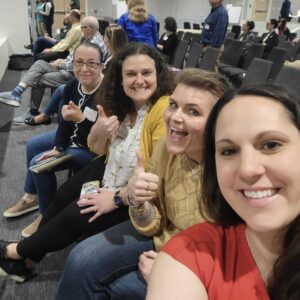
On May 3rd, the GovWebworks/Portland Webworks project management team joined a few hundred agile enthusiasts for the 11th annual Agile Maine Day at the new L.L.Bean corporate headquarters in Freeport, Maine. The beautiful venue featured high ceilings, great audio, comfy chairs, and a cozy fireplace. After mingling over breakfast, seeing old faces and meeting new and passionate people, we attended the opening keynote with Heidi Araya, Business Productivity Coach and Consultant.
Highlighting the value of Value Stream Mapping, Heidi empowered the crowd to look for areas in the workplace that could benefit from utilizing value stream strategies. Heidi was knowledgeable, clear, and motivating, and kept us engaged by sharing her own captivating experiences and inviting the audience to vote or weigh in on questions. After the keynote, in true agile fashion, the rest of the event was held in an Open Space format.
Open Space format
The Open Space format allows everyone to participate in sessions with people they may not normally have a chance to collaborate with.
Here’s how Open Space works:
- Anyone can put topics up on the board
- Volunteers pick a topic to facilitate
- Nonfacillitators join a topic of interest
Like agile itself, Open Space sessions operate under a small set of guiding principles. These principles are deceptively simple, yet provide just enough structure for spontaneous discussions:
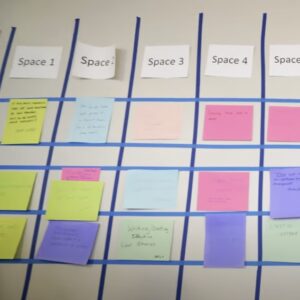
- Whoever comes are the right people.
- Whatever happens, is the only thing that could have.
- Whenever it starts is the right time.
- Whenever it’s over, it’s over.
- Wherever it happens is the right place.
- Additionally, there is one law, the Law of Personal Mobility: If you find yourself where you can’t learn or contribute, move yourself to a place where you can.
Attendees are encouraged to move around like butterflies, stay put like bumblebees, or both!
With blank pages of paper and markers in hand, we each jotted down a topic for a session we’d be interested in leading. Lines formed at the front of the room to post our topics on a giant grid with three rows of sessions and 10 columns of table spaces. After leaders took turns on the microphone to present the topic we wanted to discuss, the crowd dispersed to the designated tables of choice.
What we discussed
Our team members led and learned about a number of topics. The following summaries of the sessions led by our team members include an overview of why the topic was important, what happened during the session, and some takeaways.
#1 Creating versus mandating culture
In this session, we wanted to know: What factors make a great culture?
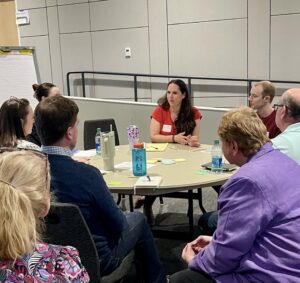
Why: When the pandemic hit, our work culture as we knew it changed instantly. Companies are now challenged to create and maintain a great culture with employees in a remote or hybrid working environment. Without dedicated effort, the remote model can be subject to minimal interactions with teammates and everyone becomes talking heads on a screen. Is it better to embrace this change and find ways to connect remotely, or mandate in-office days to encourage people to work closer together?
What Happened: During the discussion, the group identified that personal connection and caring can spark a great culture within a team, whether in person or remote. Group members noted that efforts to foster connection with peers and managers/reports is important for strengthening relationships, understanding, and communication. We heard that when there were challenges with a company’s policies or leadership, those that had connected with each other at the team level created a little pocket of magic and other corners started to notice.
Takeaways: In one story, a ScrumMaster noticed a colleague was quiet and short with the team that week. During a quick check-in, the collegue disclosed that a family member had just passed and he was going through a very difficult time. The ScrumMaster was then able to share stories and strengthen their working relationship, which made subsequent meetings easier.
Tips for connection included:
- Check in on one another and make an effort to listen with empathy.
- Ask questions and make the time to connect. “I noticed you were quiet in that last meeting. Is everything okay?” and “How do you feel the project is going?” or “How did your son’s baseball game go over the weekend?”
#2 Fostering trust and psychological safety
In this session, we wanted to know: How do organizations foster trust?
Why: As project managers, we’ve learned that transformation and change requires relationships built on trust. At GovWebworks, we dedicate a large portion of the transformation process to building connection and trust. We wanted to hear how other organizations approached transformation and if they prioritize trust and psychological safety in their transformation journey.
What Happened: We discussed the difference between trust and psychological safety. People identified the following definitions:
- Trust is about believing in the reliability and intentions of others.
- Psychological safety is about feeling comfortable to express oneself without fear of negative consequences.
Group members noted that successful, scalable, and impactful transformation and change requires a foundation of psychological safety. To create effective change and impactful transformation, teams have to feel safe enough to speak up, challenge one another, and try new things. We talked about active listening and what that looks like. We discussed how to make space for all voices to be heard, and we walked through how to navigate uncomfortable conversations and situations.
Takeaways: We learned that most organizations want to build trust but aren’t always quite sure how or where to start. The level of engagement and curiosity towards this topic was high and we all walked away with a greater respect and understanding for how trust and psychological safety can support a successful agile transformation.
#3 Agile in on a fixed bid project
In this session, we wanted to know: How do you do agile on a fixed bid project?
Why: In most cases, working within professional services includes a fixed scope, fixed cost contract. A public bid request is often written by a team working within a procurement office rather than the end users of the solution. Since agile embraces change and prioritization on business value, we can encounter a conflict with the scope that was included in the contract and what the users need at the time the project is underway.
What Happened: During this discussion, it became apparent that being agile in a professional services organization presents some unique challenges including:
- Short project duration: Teams assemble and work together for shorter periods of time so trust and team building are critical from the start.
- Client side agile adoption rate: With some of clients, agile is a new concept so there is ramp time needed to ensure the client team is aware of the roles and responsibilities during Scrum rituals (daily stand ups, refinement meetings, sprint reviews, etc). Patience, education and support are key.
- Perception that agile is expensive: When your time is tracked hourly, there is a perception that agile is costly when you have multiple meetings a week that require entire team attendance. However, our sprint retrospectives consistently reflect that the cost of not doing agile is much higher if you aren’t communicating daily with your team and your clients.
Takeaways: The discussion included some key reminders:
- Everything is a negotiation: Make similar size scope swaps to ensure the highest priority requirements are addressed.
- Partnership with the client is key: Encourage conversations about scope and budget frequently, and ensure all parties understand the contract terms.
- Reinforce the importance of Minimal Valuable Product (MVP): Release early and often to get real user feedback and only work on the features that have the most business value.
#4 Agile in a professional services environment
In this session, we wanted to know: How do you do agile in an organization that provides a service or expertise rather than a manufactured product?
Why: We wanted to look at the challenges of implementing agile practices for providing services rather than products.
What Happened: Quite a few people joined this session and we were able to uncover some of the challenges we all faced while trying to practice agile in a professional services org. The greatest outcome was finding out that we aren’t alone, that so many others have come up against this challenge and we haven’t figured it out quite yet. But, as we came together and discussed the ideas we’ve attempted, I realized that we can’t do it alone.
Takeaways: We need the experiences and ideas of others in this situation, in different industries, to form a solution. It’s the different perspectives from all angles that gets us thinking outside the box. We walked away from this session feeling less alone and more hopeful that, together, we can figure out how to be agile in a professional services environment.
- Leverage your constraints: Every software project is limited by timeline and budget. Figure out where you can use these to your advantage when helping clients make decisions on scope.
- The backlog is your friend: Use the product backlog to document and prioritize requirements as project needs change.
In conclusion
The day concluded with groups sitting in circles, passing the microphone around, and stating one word about the conference. It was a powerful ending to hear the words “insightful”, “inspiring”, “validated”, “hopeful”, “determined”.
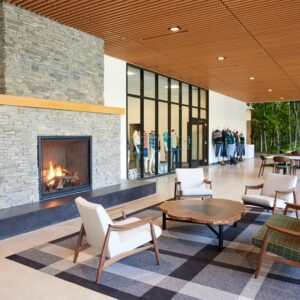
We learned first hand the value of an Open Space meeting that allowed us to engage in smaller conversations and bounce thoughts off each other. It made space for everyone to participate and encouraged everyone to choose their own path for the day. We found that we share a lot of the same strengths and challenges, even though our products are different, and we were unified by coming together to share solutions.
Overall takeaways included:
- In our hybrid and remote world, it takes more effort to build connections with colleagues, but when we do, working relationships, productivity, and employee retention all benefit.
- When looking to improve psychological safety and trust, it can be difficult to know where to start, but the key is to initiate the conversation and make space for all voices to be heard.
- When you prioritize people and relationships over procedures and processes, you give individuals the authority to make decisions and impact outcomes.
Last but not least, the beautiful and inviting Agile Maine Day venue fostered an excitement to share, a thirst to learn, and the passion to improve.
Learn more
- Agile Maine website
- Agile Maine social media pages:
- Open Space overview
- Agile Maine Day 2023 overview
- Contact us to bring agile to your organization
